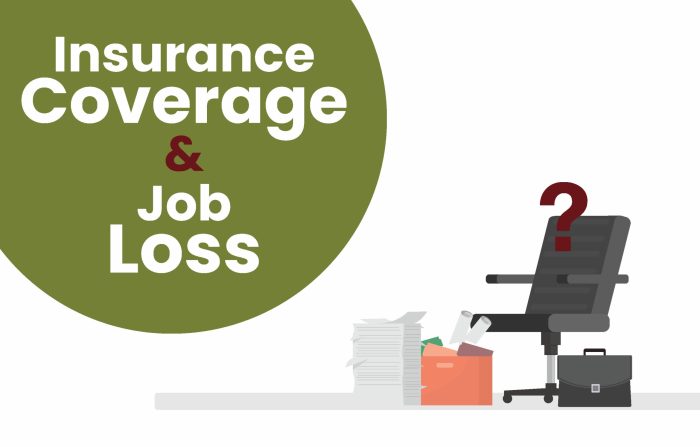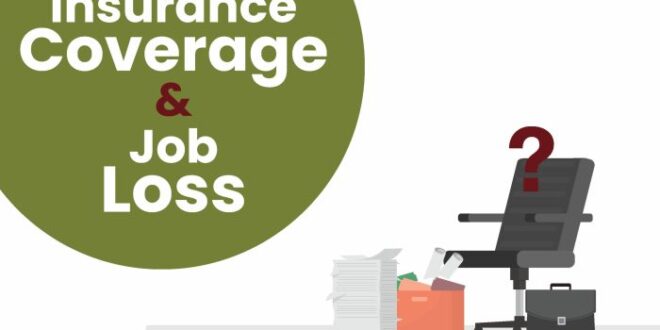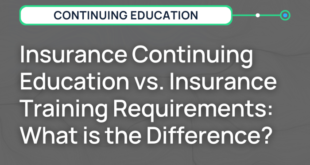Wage loss insurance will reimburse you for lost income due to unforeseen circumstances. Imagine a sudden illness or accident that forces you to take time off work. This insurance acts as a safety net, providing a vital financial cushion during such challenging times. Understanding the specifics of coverage, eligibility, and the reimbursement process is crucial for navigating this important aspect of financial security.
This comprehensive guide will delve into the intricacies of wage loss insurance, outlining its various types, covered losses, the reimbursement process, and important considerations for claimants. We’ll explore common limitations, exclusions, and illustrative scenarios to provide a clear understanding of how this insurance can protect your financial well-being.
Defining Wage Loss Insurance Reimbursement
Wage Loss Insurance, or WLI, is a crucial safety net for workers in Makassar, and many other parts of Indonesia. It’s like a financial cushion, designed to help you keep your head above water if you get hurt or sick and can’t work. Understanding the ins and outs of WLI reimbursement is key to knowing your rights and protections.Wage loss insurance is designed to replace a portion of your lost income if you are unable to work due to an unexpected illness or injury.
This financial support is meant to help you cover essential expenses like rent, food, and other necessities during your recovery period.
Types of Wage Loss Insurance
Various types of wage loss insurance exist, each with its own coverage specifics. These variations often depend on the specific employer, the nature of the workplace, and the individual circumstances of the insured. The most common types are those for sickness, accidents, and job-related illnesses.
Situations Where Wage Loss Insurance Applies
Wage loss insurance kicks in when you’re unable to work due to a covered event. This could include a workplace accident, a severe illness, or a sudden injury that prevents you from performing your job duties. Examples include injuries from construction accidents, prolonged illness requiring hospitalization, or accidents that result in temporary or permanent disabilities.
Comparison of Wage Loss Insurance Types and Reimbursement Coverage
| Type of Wage Loss Insurance | Reimbursement Coverage | Example Situations |
|---|---|---|
| Sickness Insurance | Covers lost income due to sickness, often with a waiting period and limits on the duration of coverage. | Cases of severe flu, hospitalization due to an illness, or extended recovery from surgery. |
| Accident Insurance | Covers lost income due to work-related accidents or non-work-related accidents in specific situations. | Injuries from a construction accident, a slip and fall in a store, or a car accident that results in inability to work. |
| Job-Related Illness Insurance | Covers lost income due to illnesses directly related to your job. | Developing respiratory problems due to prolonged exposure to dust in a factory, or developing a repetitive stress injury due to your work duties. |
Note: Specific coverage amounts and waiting periods vary significantly depending on the policy and the type of insurance. It’s essential to review your specific policy details for accurate information.
Covered Losses
Yo, peeps! Wage loss insurance is crucial for getting back on your feet after a bummer situation. Understanding what’s covered is key to making sure you get the help you need. Let’s dive into the details of what types of wage losses are eligible for reimbursement.This section breaks down the nitty-gritty of covered losses, so you know exactly what you can claim.
We’ll look at different scenarios, and how to determine if your situation qualifies for reimbursement. It’s all about getting the support you deserve.
Wage loss insurance will reimburse you for lost income due to unforeseen circumstances. For example, if you need to relocate for a new job opportunity, you may be able to offset some of the associated costs, such as a down payment for a new house. This is especially relevant if you are considering purchasing a home like the one for sale in Garson, Manitoba, here.
Ultimately, wage loss insurance aims to provide financial support during periods of temporary income disruption.
Specific Types of Wage Losses
Wage loss insurance typically covers losses resulting from work-related injuries or illnesses that keep you from working. This can include a range of situations, from minor accidents to major health issues. It’s important to understand the specifics of what’s covered to avoid any confusion or disappointment.
Examples of Covered Wage Losses
- Temporary Disability: If you get hurt on the job and can’t work for a few weeks, your lost wages during that time are often covered.
- Permanent Disability: If your injury or illness results in a permanent disability that limits your ability to work, the wage loss insurance can reimburse you for the difference in your pre-injury income and your reduced earning capacity.
- Death Benefits: If a worker dies due to a work-related injury or illness, their dependents may be eligible for wage loss benefits.
- Short-Term Sickness: A temporary illness that prevents you from performing your job duties might be covered.
Examples of Wage Loss Insurance Reimbursement Scenarios (Table)
| Scenario | Covered Wage Loss? | Reasoning |
|---|---|---|
| A construction worker breaks their arm while working and is unable to work for 6 weeks. | Yes | The injury is work-related, and the lost wages are directly linked to the injury. |
| An office worker experiences a sudden illness and misses 2 weeks of work. | Potentially. | Depends on the specific policy and if the illness is deemed work-related. |
| A driver gets into a car accident while commuting to work and is unable to drive for a month. | Probably not. | The accident is not work-related. Commuting is generally not covered. |
| A factory worker is laid off due to company restructuring. | No. | This is not a work-related injury or illness; it’s a business decision. |
Situations Where Wage Loss Might Not Be Covered
Not all wage losses are covered. Understanding the policy’s exclusions is essential. Some common exclusions include:
- Pre-existing conditions: If your illness or injury existed before the employment or policy start date, it might not be covered.
- Personal illnesses or injuries: Illnesses or injuries not directly related to work duties are typically excluded.
- Job-related voluntary absences: Time off taken for personal reasons, like vacation, is typically not covered.
- Disputes or actions not related to work duties: The insurance generally does not cover wage loss due to disputes or actions not directly related to work-related injuries.
Importance of Understanding Eligibility Criteria
It’s crucial to thoroughly review the specific eligibility criteria Artikeld in your policy document. This will help you determine if your particular situation qualifies for reimbursement. This knowledge is vital to avoid disappointment and to maximize your benefits. Don’t just assume; read the fine print!
Factors Determining Reimbursement Amount
The amount of reimbursement depends on various factors, including the policy’s provisions, the nature of the wage loss, and the length of time you were unable to work. Things like your pre-injury earnings, the specific coverage limits in your policy, and any applicable deductions are all considered.
Reimbursement Process
Wih, mau claim asuransi gaji terhambat? Tenang, kita bahas step-by-step proses klaimnya biar lancar. Ini penting banget buat dapetin duit ganti rugi yang pantas, kan? Kita bakal ngebahas cara ngelakuin klaim, dokumen apa aja yang dibutuhkan, cara cek status klaim, dan berapa lama biasanya prosesnya.Understanding the reimbursement process is key to getting your rightful compensation quickly and efficiently.
It’s like a roadmap to getting your cash flow back on track after a tough time. Let’s dive in!
Claim Filing Steps
To start your wage loss insurance claim, follow these steps:
- Gather Necessary Documents: Ini langkah awal yang penting banget. Kumpulin semua dokumen yang dibutuhkan, seperti slip gaji, surat keterangan sakit, dan bukti-bukti lainnya. Pastikan semuanya lengkap dan valid ya. Jangan sampai ada yang terlewat karena bisa bikin prosesnya lama.
- Complete the Claim Form: Isi formulir klaim dengan teliti dan akurat. Jangan sampai ada kesalahan penulisan atau informasi yang kurang lengkap. Isi semua kolom yang dibutuhkan, dan pastikan semua informasi akurat. Periksa ulang sebelum submit!
- Submit the Claim: Setelah semua dokumen siap, kirimkan berkas klaim ke pihak asuransi. Bisa melalui online atau langsung ke kantor cabang. Jangan lupa catat tanggal pengiriman dan nomor referensi klaim, biar kamu bisa ngecek progress nanti.
- Provide Supporting Evidence: Setelah submit, pihak asuransi mungkin butuh bukti-bukti tambahan. Siap sediain semua dokumen pendukung untuk mempercepat proses klaim.
Required Documentation, Wage loss insurance will reimburse you for
The specific documents required can vary, but generally, you’ll need:
- Proof of Employment: Slip gaji, kontrak kerja, atau surat keterangan kerja.
- Proof of Loss: Surat keterangan sakit, bukti kecelakaan kerja, atau dokumen yang menunjukan kamu kehilangan pendapatan.
- Supporting Documents: Dokumen pendukung seperti surat keterangan dari dokter, bukti pengeluaran rumah sakit, atau bukti-bukti lain yang mendukung klaim kamu.
Claim Status Tracking
Keeping tabs on your claim is crucial. Berikut cara cek status klaim kamu:
- Online Portal: Banyak asuransi menyediakan portal online untuk cek status klaim. Biasanya ada fitur untuk cek progress dan informasi terbaru.
- Contacting the Insurance Company: Kamu juga bisa menghubungi pihak asuransi langsung untuk menanyakan status klaim. Ini bisa membantu kamu untuk mendapat informasi yang lebih cepat.
Claim Processing Timeframe
The processing time for a wage loss insurance claim can vary depending on the complexity of the case and the insurance company’s procedures. Generally, the average processing time is around 1-3 weeks. Tapi, ada juga kasus yang bisa lebih cepat atau lebih lama. Siap-siap aja ya.
Reimbursement Process Stages
Berikut ini tabel yang memperlihatkan tahapan-tahapan proses klaim asuransi:
| Stage | Description |
|---|---|
| Claim Submission | Pengumpulan dan pengiriman dokumen klaim. |
| Review and Verification | Pihak asuransi meninjau dokumen dan melakukan verifikasi. |
| Approval/Disapproval | Pihak asuransi memutuskan apakah klaim disetujui atau ditolak. |
| Payment Processing | Proses pembayaran jika klaim disetujui. |
Limitations and Exclusions: Wage Loss Insurance Will Reimburse You For
Yo, peeps! Wage loss insurance, while a lifesaver, ain’t magic. It comes with some rules, so you gotta know the deets. Understanding the limitations and exclusions is key to knowing what’s covered and what’s not. This way, you won’t be caught off guard when you need the benefits.
Common Limitations and Exclusions
Wage loss insurance policies often have specific limitations and exclusions to keep things fair for everyone. These rules are put in place to prevent abuse and ensure the fund is used for legitimate cases of lost income.
Factors Affecting Reimbursement Amount
Several factors can impact the total reimbursement you get. The policy’s specifics, your salary history, the length of your absence, and the cause of the absence are all considered. This is important because it helps determine the correct payout amount.
Conditions for Denial of Reimbursement
Reimbursement might be denied if your absence isn’t covered by the policy, if you don’t meet the required waiting period, or if you fail to provide necessary documentation. It’s crucial to check the fine print and make sure you meet all the criteria to avoid any hassles.
Examples of Uncovered Losses
Some losses just aren’t covered. For instance, if you’re out sick due to a non-work-related injury, or if you’re taking an extended vacation, the policy might not cover that time off. Similarly, if you quit your job voluntarily, your wage loss might not be covered. It’s crucial to read the policy thoroughly to avoid any surprises.
Summary of Exclusions and Limitations
| Exclusion Category | Description |
|---|---|
| Pre-existing Conditions | Injuries or illnesses that existed before the policy started might not be covered. |
| Voluntary Leave | Time off taken for personal reasons, like vacations, might not be covered. |
| Non-Work-Related Injuries | Injuries or illnesses that are not related to your job duties won’t be covered. |
| Illegal Activities | If your absence is due to illegal activities, you might not receive any reimbursement. |
| Insufficient Documentation | Failing to provide required medical records or other documentation may lead to denial. |
Important Considerations for Claimants

Yo, peeps! Getting your wage loss insurance claim sorted out can be a total hassle, but understanding the ins and outs is key to getting your rightful compensation. Knowing the rules and having the right paperwork ready will make the whole process way smoother. Let’s dive into some crucial things you gotta keep in mind.Understanding the fine print of your policy is super important.
It’s like reading the instructions for a complicated game – if you don’t get it right, you’re not gonna win. This means understanding the specific situations covered, the time limits for filing, and any potential limitations. Knowing the rules upfront will save you major headaches down the line.
Understanding Policy Terms and Conditions
Your policy is your contract with the insurance company. It details exactly what’s covered and what’s not. Thoroughly reviewing the policy is essential to ensure you’re aware of the specific requirements and conditions that need to be met to successfully claim. This includes the duration of coverage, the definition of eligible losses, and the procedures for initiating a claim.
The Role of Documentation in Successful Claims
Proper documentation is the lifeblood of a successful claim. Think of it as the evidence you need to prove your case. Incomplete or inaccurate paperwork can delay or even deny your claim. Always keep copies of all relevant documents, including medical records, pay stubs, and any other supporting evidence.
The Role of Legal Counsel in a Claim Process
Navigating the complexities of a wage loss insurance claim can be tricky. If you’re feeling overwhelmed or unsure about the process, seeking legal counsel can be a game-changer. A lawyer can help you understand your rights, represent your interests, and ensure that your claim is handled correctly and efficiently.
Importance of Timely Filing
Filing your claim on time is crucial. Most insurance policies have specific deadlines for submitting claims. Missing these deadlines could result in your claim being rejected. Knowing these deadlines and filing promptly can save you from unnecessary delays and potential claim denial.
Essential Documents for a Claim
To ensure a smooth claim process, gathering the right documents is essential. This table Artikels the necessary documents for a wage loss insurance claim.
| Document Type | Description |
|---|---|
| Policy Documents | Your insurance policy, including the terms and conditions. |
| Proof of Loss | Evidence of your loss of income, such as pay stubs, employment contracts, and letters from your employer. |
| Medical Records | Medical records related to your injury or illness, if applicable. |
| Proof of Eligibility | Documentation proving you meet the criteria for coverage, such as certificates or licenses. |
| Supporting Documents | Any other supporting documents relevant to your claim, like accident reports or witness statements. |
Illustrative Scenarios
Yo, peeps! Let’s dive into some real-life examples of how wage loss insurance works. This ain’t just theory, it’s about how it actually helps you out when things go sideways. We’ll see how different situations affect your coverage and reimbursement.Understanding these scenarios is crucial for knowing your rights and what to expect when you need to file a claim.
We’ll break down covered events, claim outcomes, calculation methods, and the factors that influence your insurance benefits.
Covered Wage Loss Event Scenario
This is a scenario where a worker, a graphic designer named Rara, is involved in a workplace accident. During a rush job, a heavy file cabinet unexpectedly collapsed, injuring her wrist. This injury kept her out of work for two weeks. Since the accident was due to a faulty office equipment (identified by the safety committee report), her injury falls under the category of covered wage loss event under the company’s wage loss insurance policy.
The insurance will cover the wages she lost during her recovery time, and cover any medical expenses as Artikeld in the policy.
Wage Loss Claim Case Study and Outcome
A construction worker, Bagas, was injured on the job site. He slipped on a wet surface, fracturing his ankle. His claim for wage loss benefits was approved after a thorough investigation by the insurance adjuster, which included reviewing medical records and site accident reports. The claim covered his lost wages for 8 weeks, aligning with the duration of his medical leave.
Bagas also received reimbursement for rehabilitation costs and other associated medical expenses. The claim was resolved smoothly and efficiently.
Reimbursement Amount Calculation
Let’s say Dita, a barista, is out of work for 4 weeks due to a severe illness. Her average weekly wage is Rp 2,000,
000. Her wage loss insurance policy covers 80% of her lost wages. The reimbursement amount would be calculated as follows
Rp 2,000,000 (average weekly wage) x 4 weeks (duration of absence) x 80% (coverage percentage) = Rp 6,400,000
This is the total reimbursement amount she’d receive.
Insurance Coverage Variations Based on Circumstances
Insurance coverage varies significantly based on the circumstances of the wage loss event. Factors like the nature of the injury, the length of the absence, and the specific provisions within the policy all play a role. For example, pre-existing conditions might not be covered, or there could be limitations on the amount of reimbursement for specific types of illnesses.
The policy document itself will contain details about the different conditions and exclusions.
Reimbursement Scenarios Table
| Scenario | Covered Event | Reimbursement Amount (Rp) | Coverage Percentage |
|---|---|---|---|
| Barista Illness | 4 weeks absence due to illness | 6,400,000 | 80% |
| Construction Injury | 8 weeks absence due to ankle fracture | variable, depending on average weekly wage and coverage | variable, depending on policy |
| Graphic Designer Accident | 2 weeks absence due to office equipment failure | variable, depending on average weekly wage and coverage | variable, depending on policy |
This table provides a basic overview of potential reimbursement scenarios. Remember that the actual amount and coverage can vary depending on the specific details of your situation and the terms of your wage loss insurance policy.
Sample Policy Provisions

Yo, peeps! Wage loss insurance policies are crucial for keeping your income flowing when the unexpected hits. Understanding the nitty-gritty details is key to making sure you’re covered properly. Let’s dive into some sample policy provisions.
Policy Excerpt Example
“This policy provides wage loss benefits to eligible employees who experience a covered loss of income due to a qualifying event, such as a work-related injury or illness. Benefits are paid based on a percentage of the employee’s average weekly wage, up to a maximum amount specified in the policy schedule.”
Key Provisions in a Wage Loss Policy
This section Artikels the essential components of a wage loss insurance policy. Knowing these provisions helps you grasp the policy’s scope and coverage.
Wage loss insurance will reimburse you for lost income, and if you’re considering a trip, exploring exciting destinations like Singapore and Malaysia is a wonderful choice. You can find various Singapore to Malaysia tours packages here , which may help you plan an unforgettable journey. Ultimately, wage loss insurance is designed to support you during unforeseen circumstances and help you financially recover.
- Covered Events: The policy clearly defines the circumstances that trigger wage loss benefits, such as work-related accidents, occupational illnesses, or specific employment terminations. These events are Artikeld in detail to ensure clarity and prevent disputes.
- Eligibility Requirements: The policy details who is eligible for benefits, including specific employment status criteria and conditions, like the duration of employment. This ensures that benefits are distributed fairly and according to the terms of the policy.
- Loss Calculation Method: The policy explains how the amount of wage loss benefits is determined. This typically involves calculating a percentage of the employee’s average weekly wage during a specified period before the loss, up to a maximum amount specified in the policy schedule.
- Reimbursement Procedures: The policy spells out the steps involved in claiming and receiving wage loss benefits, including required documentation, claim forms, and timeframes for processing. Clear instructions are crucial for a smooth claim process.
Covered Losses and Reimbursement Procedures
This section explicitly defines the types of wage losses covered by the policy and the reimbursement process.
- Types of Covered Losses: The policy specifically details the different types of income losses covered, like temporary disability due to work-related injuries, long-term disability due to illness, or even temporary unemployment due to company shutdowns, if the policy specifically covers that.
- Documentation Requirements: The policy lists the necessary documents required to support a wage loss claim, including medical records, employment verification, and proof of income loss. This ensures claims are processed efficiently and accurately.
- Time Limits for Claims: The policy Artikels the deadlines for filing wage loss claims, ensuring timely processing and preventing delays in benefit payments.
Claimant Responsibilities
The policy Artikels the responsibilities of the claimant to ensure a smooth and efficient claim process.
- Notification Requirements: The policy details the procedure for notifying the insurer about the wage loss event and the necessary steps to take.
- Cooperation with the Insurer: The policy emphasizes the claimant’s role in cooperating with the insurer during the claim investigation, including providing requested information and attending necessary meetings.
- Compliance with Policy Terms: The policy Artikels the importance of the claimant adhering to all policy terms and conditions for eligibility and proper claim processing.
Policy Terms and Definitions
This table provides a summary of key policy terms and their meanings.
| Term | Definition |
|---|---|
| Covered Loss | A loss of income resulting from a covered event, as defined in the policy. |
| Average Weekly Wage | The employee’s typical weekly earnings during a specified period before the covered loss. |
| Maximum Benefit Amount | The highest amount of wage loss benefits payable under the policy. |
| Claimant | The individual seeking wage loss benefits. |
Last Recap
In conclusion, wage loss insurance provides a vital safety net against unexpected financial hardship. By understanding the nuances of coverage, claimants can effectively navigate the reimbursement process. This guide has provided a thorough overview, highlighting the importance of understanding policy terms, documentation, and the potential for legal counsel. Remember, proactive planning and awareness are key to maximizing the benefits of this insurance.
Question Bank
What are the typical situations where wage loss insurance applies?
Wage loss insurance typically covers situations such as accidents, illnesses, or job-related injuries that prevent you from working and earning income. It can also cover situations like pregnancy-related leave or caregiving responsibilities.
How long does the claim process typically take?
The timeframe for processing a claim varies depending on the insurance provider and the complexity of the case. However, most claims are processed within a few weeks to several months. Prompt and thorough documentation significantly speeds up the process.
What documents are generally needed to file a wage loss insurance claim?
Essential documents may include medical records, doctor’s notes, proof of employment, and any supporting evidence relevant to your situation. Consult your policy for a complete list of required documentation.
Can wage loss insurance cover losses due to a natural disaster?
Coverage for losses due to natural disasters varies depending on the policy. Some policies may exclude events like hurricanes or earthquakes. Review your policy carefully for specific details.
 Nimila
Nimila




